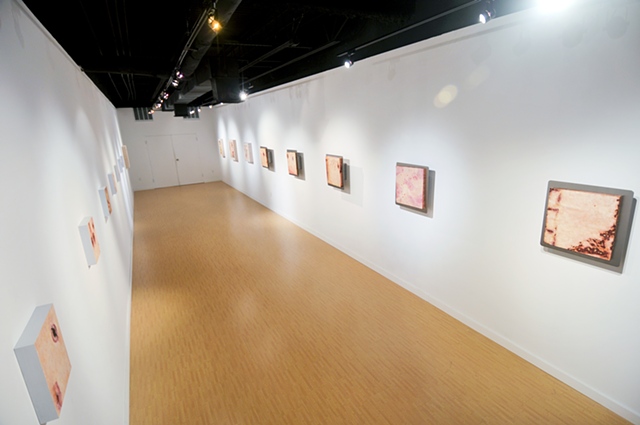
Material Meets Meaning
As an artist, I am committed to creating aesthetic objects that foreground the materiality of the work in the construction of any visual meaning. This commitment grew out of having worked with diverse materials and techniques in both two and three-dimensions, both figuratively and abstractly. As a result, my work often purposefully combines media to create drawings and paintings that are both objects and images, producing content as much through material selection as depicted form. Throughout my work, the figure or its substitute is present or inferred, existing in tension between image and text, narrative and metaphor, and actual and depicted space. For me, this dichotomization of form and reference conceptually equates to the complex social positioning of the individual between the personal and the political, between experience and understanding. Through wry juxtapositions of images, textual references, and materials, my work is intended to provide an opportunity for social critique within a contemporary visual discourse.
Art Series
The Human Condition series references medical and scientific illustration along with skin disease through depictions of the phenomenology of human skin including aging, injury, and healing. Works in this series involve painted hydrocal castings mounted on stainless steel supports. The resulting object oscillates uncomfortably between reality and illusion engaging notions of the abject and the medical.
The GSW series is inspired by the popular fascination with criminal forensics in the media while echoing nineteenth-century poetic notions found in Baudelaire's Les Fleurs du Mal. Painted in an expressive style with both palette knife and brush, these artworks depict gun shot wounds as today's flowers of evil in order to reveal a difficult beauty.
The GDK (Guns Don’t Kill?) series is a continuing exploration of gun shot wounds in the silverpoint medium. Repeatedly punched, rolled, stabbed and drawn, silverpoint is used non-traditionally to create marks and works reflective of violent circumstance. In this series, embossed silver text, Guns Don’t Kill?, is found only with close examination inside a white floater frame. Small, each work is intended for individual contemplation.
The (American Dream) series is a research-driven exploration of personal and national history through the lens of visual art. Drawing from twentieth-century family photographs, the series reconstructs moments that reflect both intimate memory and broader historical themes. Each piece merges digital imaging with traditional painting techniques—oil on panel and paper, and water-based media on rag paper—to create environments that evoke the emotional and historical resonance of the original photographs.